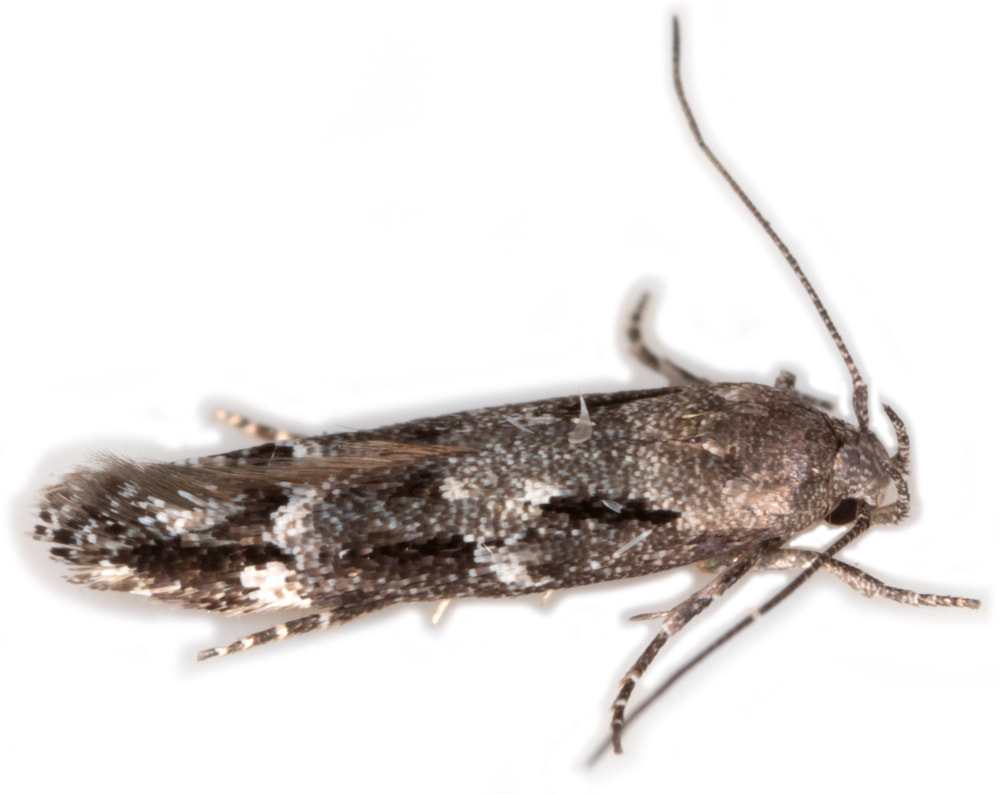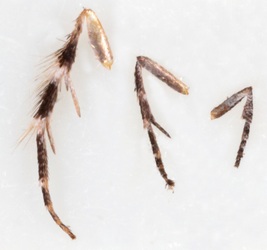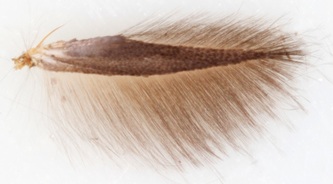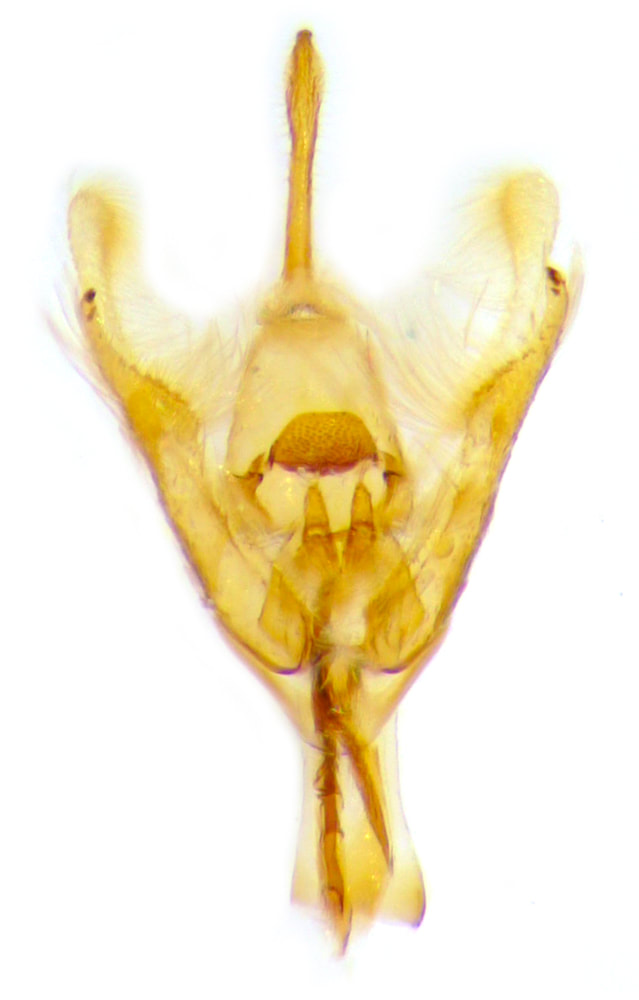40.009 Mompha sturnipennella (Rosebay Gall Mompha)
ws: 9-13mm; bivoltine Jul-Aug, Sep-May hibernating overwinter; rosebay willowherb (Chamerion angustifolium); NS-B in England, mainly SE
ID: Forewing with a white fascia; head and thorax grey > M.subbistrigella/sturnipennella
M.sturnipennella averages larger (vs ws 7-11.5mm) and has some ferruginous scales or streaks in centre of forewing. According to MBGBI4.1 it also has "distinct white streaks on the costa of the apical area" - certainly it does seem to show more white-tipped scales in this area but I would hesitate to say this amounted to distinct streaks. I am not sure if this is a consistent difference but, in the specimens I have examined, the ventral surface of the abdomen in M.subbistrigella has a complete black band at the base of each segment from S3 posteriorly, while in M.sturnipennella these black bands are incomplete, being obsolete centrally.
Male genitalia: Illustrated in MBGBI4.1 p228 and shown at Moth Dissection. I cannot discern any consistent differences between the armature of M.sturnipennella and M.subbistrigella; but there are consistent differences in the aedeagus which are illustrated below.
Female genitalia: in M.sturnipennella the ductus bursae has a slightly elongate sclerotisation, much narrower than the bursa copulatrix and a patch of fine spines at the junction between DB and BC (anterior to the anterior margin of the sclerotised area); while M.subbistrigella has a distinctly elongate sclerotisation nearly as broad as the BC and a patch of course spines at the posterior margin of the sclerotised area.
M.sturnipennella averages larger (vs ws 7-11.5mm) and has some ferruginous scales or streaks in centre of forewing. According to MBGBI4.1 it also has "distinct white streaks on the costa of the apical area" - certainly it does seem to show more white-tipped scales in this area but I would hesitate to say this amounted to distinct streaks. I am not sure if this is a consistent difference but, in the specimens I have examined, the ventral surface of the abdomen in M.subbistrigella has a complete black band at the base of each segment from S3 posteriorly, while in M.sturnipennella these black bands are incomplete, being obsolete centrally.
Male genitalia: Illustrated in MBGBI4.1 p228 and shown at Moth Dissection. I cannot discern any consistent differences between the armature of M.sturnipennella and M.subbistrigella; but there are consistent differences in the aedeagus which are illustrated below.
Female genitalia: in M.sturnipennella the ductus bursae has a slightly elongate sclerotisation, much narrower than the bursa copulatrix and a patch of fine spines at the junction between DB and BC (anterior to the anterior margin of the sclerotised area); while M.subbistrigella has a distinctly elongate sclerotisation nearly as broad as the BC and a patch of course spines at the posterior margin of the sclerotised area.
-
Variation
-
Dissection
-
Male genitalia
-
Female genitalia
<
>
|
M.sturnipennella vs M.subbistrigella - aedeagus
In both species the cornuti are arranged in 2 longitudinal bundles, this separation into 2 bundles is more apparent and more complete in M.subbistrigella. In M sturnipennella the bundles can be described thus: a) ~3 long relatively fine cornuti the basal 2 of which are about half the length of the aedeagus, the more apical somewhat shorter; b) a robust curved apical cornutus, ~1/3 the length of the aedeagus, attached to a diffusely sclerotised plate extending from the base of the aedagus. And in M.subbistrigella: c) a group of 3 relatively robust cornuti, the most basal of which is curved and ~1/2 the aedeagus in length, the 2nd extends ~2/3 the length of the aedeagus, and the most apically arising 3rd cornutus is short; d) a broad sclerotisation which is expanded at the apex and which forms a more or less distinct robust cornutus along one of its edges. The papillae at the apex of the aedeagus (e) are narrower in M.sturnipennella such that the separation between the papillae is ~ the width of a papilla in M.sturnipennella and much narrower than the width of a papilla in M.subbistrigella. Note that the exact appearance/visibility of these features varies somewhat with the orientation of the preparation |
§1 Westcliff-on-sea, Essex; 24/03/2013; female; fw 5.4mm
§2 Orlestone Forest, Kent; 11/07/2018; male; fw 5.1mm
§3 Covert Woods, Kent; 214/07/2022; female; fw 5.6mm
All images © Chris Lewis
§2 Orlestone Forest, Kent; 11/07/2018; male; fw 5.1mm
§3 Covert Woods, Kent; 214/07/2022; female; fw 5.6mm
All images © Chris Lewis
Page published 31/03/2013 (§1) | §2 added 19/05/2019 | §3 added 21/12/2022


























